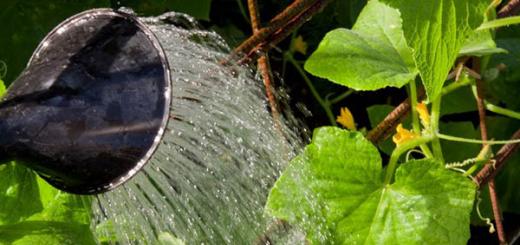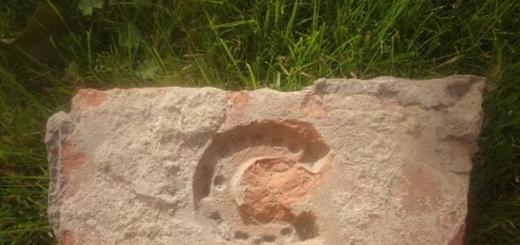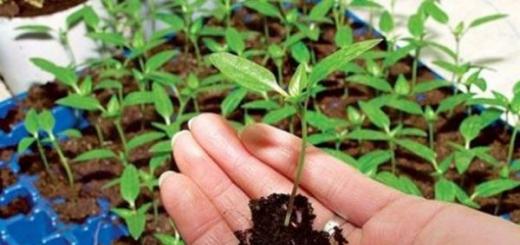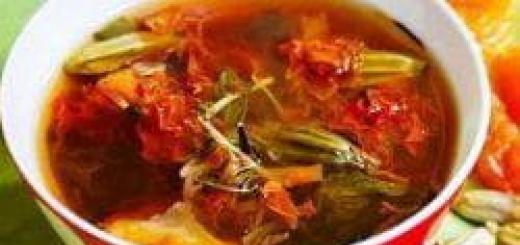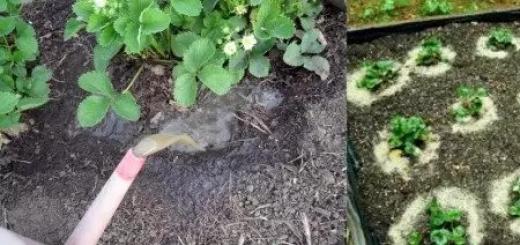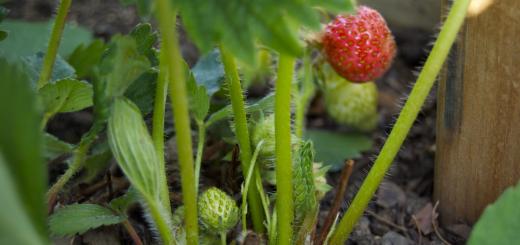Siberian barberry is part of the family called Barberryaceae. In Latin, the name of this plant is as follows: Berberis sibirica Pall.
Description of Siberian barberry
Siberian barberry is a low shrub whose height does not exceed one meter. This shrub will be highly branched and also thorny, which has brownish branches that are covered with thorns. The leaves of this plant are rather small, leathery and oblong-ovate, with subulate-toothed edges. The flowers of Siberian barberry are yellow in color, most often they are drooping, and the flowers are located separately on short peduncles. The fruit of the plant is a wide and oval berry, the length of which can reach nine millimeters. These fruits are red.
Siberian barberry blooms from June to July, and the fruits ripen at the end of August. Plant propagation occurs through seeds. Under natural conditions, this plant is found in Western Siberia, as well as Eastern Siberia: Daursky and Angara-Sayan regions, as well as in Central Asia: Dzungaro-Tarbagatai region.
Medicinal properties of Siberian barberry
Roots, root bark, branch bark, fruits, leaves and wood are used for medicinal purposes. The fruits should be collected immediately after they ripen; when collecting, care should be taken not to damage the branches of Siberian barberry. It is important to leave half of the fruits intact, and the next time harvesting can be done only after five or even ten years. The shelf life of Siberian barberry roots is three years.
Leaves should be collected while still in the budding and flowering phase: the leaves are torn off by hand. At the same time, you cannot collect those leaves that are covered with rust or have previously been attacked by pests. These leaves can be stored for three years.
Siberian barberry contains the alkaloid berberine, and the roots of the plant contain the alkanoids acanthine, leontine, berberine, palmitine, jatroricin and columbamine. The fruits of Siberian barberry contain the following acids: anthocyanins, citric, tartaric and malic. The fruits also contain carotene and pectin substances, and flavonoids, isorhamnetin and luteolin glycosides were found in the leaves and fruits.
In Tibet, the stems of this plant are used for jaundice, in the treatment of conjunctivitis and pulmonary tuberculosis as an antipyretic. In addition, the stems of Siberian barberry are also used for joint pain, as well as for acute and chronic bronchitis. And an infusion of leaves is considered a very effective remedy for uterine bleeding.
An infusion prepared from the fruits of Siberian barberry is used for tuberculosis and peptic ulcers as a general tonic. In Tibetan and Mongolian medicine, this remedy is also used for joint diseases, in the treatment of wounds, ulcers and conjunctivitis as a fixative and antipyretic agent.
To prevent the occurrence of tumors and metastasis, take an infusion of one or two tablespoons, two or even three times a day before meals. This infusion is prepared as follows: take a little more than a teaspoon of bark and roots, pour this mixture with one glass of boiling water, after which the resulting mixture must be infused in a water bath for about ten to fifteen minutes. Then this mixture should be cooled and then filtered.
For biliary dyskinesia, it is necessary to take half a glass of infusion three or four times a day before meals. To prepare this infusion, take a little more than two teaspoons of crushed fruits, which are poured with one glass of boiling water.
part of the family called barberry. In Latin, the name of this plant is as follows: Berberis sibirica Pall.
Description of Siberian barberry
Siberian barberry is a low shrub whose height does not exceed one meter. This shrub will be highly branched and also thorny, which has brownish branches that are covered with thorns. The leaves of this plant are rather small, leathery and oblong-ovate, with subulate-toothed edges. The flowers of Siberian barberry are yellow in color, most often they are drooping, and the flowers are located separately on short peduncles. The fruit of the plant is a wide and oval berry, the length of which can reach nine millimeters. These fruits are red.
Siberian barberry blooms from June to July, and the fruits ripen at the end of August. Plant propagation occurs through seeds. Under natural conditions, this plant is found in Western Siberia, as well as Eastern Siberia: Daursky and Angara-Sayan regions, as well as in Central Asia: Dzungaro-Tarbagatai region.
Medicinal properties of Siberian barberry
Roots, root bark, branch bark, fruits, leaves and wood are used for medicinal purposes. The fruits should be collected immediately after they ripen; when collecting, care should be taken not to damage the branches of Siberian barberry. It is important to leave half of the fruits intact, and the next time harvesting can be done only after five or even ten years. The shelf life of Siberian barberry roots is three years.
Leaves should be collected while still in the budding and flowering phase: the leaves are torn off by hand. At the same time, you cannot collect those leaves that are covered with rust or have previously been attacked by pests. These leaves can be stored for three years.
Siberian barberry contains the alkaloid berberine, and the roots of the plant contain the alkanoids acanthine, leontine, berberine, palmitine, jatroricin and columbamine. The fruits of Siberian barberry contain the following acids: anthocyanins, citric, tartaric and malic. The fruits also contain carotene and pectin substances, and flavonoids, isorhamnetin and luteolin glycosides were found in the leaves and fruits.
In Tibet, the stems of this plant are used for jaundice, in the treatment of conjunctivitis and pulmonary tuberculosis as an antipyretic. In addition, the stems of Siberian barberry are also used for joint pain, as well as for acute and chronic bronchitis. And an infusion of leaves is considered a very effective remedy for uterine bleeding.
An infusion prepared from the fruits of Siberian barberry is used for tuberculosis and peptic ulcers as a general tonic. In Tibetan and Mongolian medicine, this remedy is also used for joint diseases, in the treatment of wounds, ulcers and conjunctivitis as a fixative and antipyretic agent.
To prevent the occurrence of tumors and metastasis, take an infusion of one or two tablespoons, two or even three times a day before meals. This infusion is prepared as follows: take a little more than a teaspoon of bark and roots, pour this mixture with one glass of boiling water, after which the resulting mixture must be infused in a water bath for about ten to fifteen minutes. Then this mixture should be cooled and then filtered.
For biliary dyskinesia, it is necessary to take half a glass of infusion three or four times a day before meals. To prepare this infusion, take a little more than two teaspoons of crushed fruits, which are poured with one glass of boiling water.
Barberry is one of the most attractive shrubs for landscape design. The variety of varieties with different leaf colors, good tolerance to pruning, after which barberry retains its shape for a long time, make this plant very popular as a garden decoration. But not only does barberry boast of its beauty, it is also well known for the fact that the fruits, leaves, and even the roots of this shrub are beneficial to health.
Useful properties of barberry
Barberry is one of those rare plants, all parts of which are beneficial to health. The healing properties of barberry have been the most studied.
- Ripe barberry berries are not only tasty and are successfully used as a seasoning for food, but also very healthy, as they contain large amounts of ascorbic, malic, citric, tartaric acid and vitamin K. Juice from the berries is a valuable vitamin supplement.
- The unripe fruits are known to contain the alkaloid berberine, which is used in the treatment of liver and gallbladder diseases.
- Tincture of barberry leaves and roots is used to stop uterine bleeding.
- Root extracts are used to normalize digestion, they reduce inflammation of the mucous membranes; a decoction of barberry roots can be used to rinse your mouth for gum inflammation.
This is a versatile shrub that you can easily grow in your garden. It will give you pleasure with its beauty, diversify your dishes with its sweet and sour taste, prevent illness and even treat if necessary.

Growing barberry in Siberia
The question is often asked: “Can barberry grow in Siberia?” And the answer to this question is: “Of course it can.”
- Barberry is a frost-resistant and drought-resistant shrub.
- Barberry is a light-loving plant and grows successfully where there is a lot of light.
- Does not like waterlogged, heavy and saline soils. Loamy, well-drained soils with a sufficient amount of organic fertilizers are most favorable for it.
Features of care
- Immediately after planting, plants are watered abundantly, and then once a week at the rate of 5-7 liters of water per plant.
- They begin to fertilize from the second year after planting, applying nitrogen fertilizers in the spring (20 g of urea per 10 liters of water), fertilize once every 3 years.
- Acidic soils must be limed when planting; the optimal pH value should be 6.5 - 7.
- Barberry needs annual pruning to maintain its decorative qualities.
- The shrub is propagated by seeds and cuttings.
__________________________________________________________________

Types and varieties of barberry for Siberia
When choosing a plant for growing in harsh regions, it is necessary to take into account the characteristics of the type and variety of the plant. Grows well in Siberia:
- common barberry, dark purple form,
- Amur barberry,
- Siberian barberry is generally endemic to Siberia - it grows quietly in the wild in the harsh Siberian climate.
You need to be more careful when choosing varieties of Thunberg barberry - often its winter hardiness is not enough to survive our winter frosts.
_____________________________________________________________________

Barberryordinary, form dark - purple
- A winter-hardy variety of common barberry with very beautiful decorative dark purple leaves and golden flowers.
- A strongly branched shrub, grows quickly and reaches up to 2.5 m in height.
- When grown in the shade, it loses its bright leaf color.

BarberryAmur
- A low-branched shrub up to 3.5 m in height with long oval leaves up to 10 cm long.
- It is very beautiful during flowering, when dense clusters of inflorescences of yellow flowers form on the bush.

- At the end of August, the leaves of Amur barberry acquire a beautiful bright color from yellow to dark purple.

BarberrySiberian
- A strongly branched, low-growing shrub up to 1 m high with small dense leathery leaves.
- Red berries ripen in the first half of September.
- Grows well on rocky soil.

Barberry Vlandscapedesign
Barberries can decorate an area in a variety of compositions. Let's look at some of them.
- Siberian barberry is well suited for this purpose; it is quite low-growing, and even in nature it grows on rocks, on stony and gravelly soil.
| Alivebarberry hedges |
In Siberia, the best species for creating a hedge is the common barberry.
- It is from this that good dense thorny hedges are obtained, which can also serve as a natural protection for your site from uninvited guests, and the height of the bush is 2.5 m for this purpose the most optimal.
- To create a dense living single-row hedge, plant 4 bushes per 1 meter of land, and for a free-growing hedge - 2 plants per 1 meter.

Barberry is the main representative of the family of the same name. This is a spectacular shrub with beautiful leaves and thorny shoots. It is very difficult not to notice barberry during the flowering and fruiting period, since at this time it is especially beautiful. In nature, there are about one hundred and seventy species of this plant, each of them has its own characteristics and distinctive features.
Species diversity of barberries
Many of us remember those same “Barberry” candies, syrups and lemonades that were so popular during the Soviet era. All these products were made from the berries of edible barberry species. Now many gardeners grow this unpretentious plant on their plots. However, not all species take root in our latitudes, but only those that have managed to adapt to a temperate climate.
Bright barberry berries are hard to miss among garden greenery
The barberry genus includes many species, including both evergreen and deciduous plants. A common feature of these shrubs is the presence of thorns - single, double, triple, and sometimes even five pieces together. They are located at the base of the kidneys and can be very hard or soft, almost invisible.
Barberry bushes bloom from late May to early July. The flowers are yellow and small. The berries are light or dark red, sometimes black, with a pronounced sour taste, but quite edible.
Barberry plantings look very decorative throughout the season. Deciduous species are a real decoration of the autumn garden due to the bright color of the leaves and berries.
Barberry bushes decorate the garden throughout the season
Edible species
No home garden is complete without fruit trees. Even the laziest gardeners plant their plots with raspberries, apple trees, and pears, but few people prefer such an unpretentious plant as barberry. In addition to its nutritional value, it is also worth noting its healing and decorative properties.
The most common barberry is in the Caucasus and Southern Europe, but it can also grow in Siberia. Shrubs of this species are frost-resistant and can withstand temperatures down to -35 degrees. The main condition for growing is placing the plants in sunny and dry areas. Planting in the shade negatively affects the taste and quantity of fruits.
Common barberry is one of the most common members of the family, which is distinguished by its unpretentiousness and high frost resistance.
The common barberry has quite a few varieties, namely:

Barberry syrup recipe. To prepare, you need to mash the berries with water, then squeeze out the juice. After this, the liquid must be brought to a boil, passed through a filter and added granulated sugar.
Video: characteristics and beneficial properties of barberry
Plants of this species are shrubs reaching a height of up to 3.5 m. The shoots have spines up to 2 cm long. Depending on the time of year, the color of the leaves may change, acquiring a reddish tint in the fall. In spring, small yellow flowers appear on the bushes with a pleasant aroma. In November, the flowers are replaced by bright red fruits.
Amur barberry is distinguished by abundant flowering and fruiting
There are two best known varieties of this species:
- Japonica - characterized by more rounded leaves and a small number of flowers on the racemes.
- Orpheus is a non-flowering variety bred by Russian breeders exclusively for decorative purposes. Bush height - 1 m.
This type of barberry grows in Central Asia, Mongolia and China. It is its fruits that are included in traditional Asian dishes such as lagman, shurpa and pilaf. The shrub can reach up to two meters in height. The shiny reddish shoots are covered in showy dark green leaves in spring. The yellow-orange inflorescences bloom in early June and have a distinct aroma. The fruits are painted black, covered with a bluish coating on top.
The spherical barberry is not very adapted to the climatic conditions of Russia. If you decide to plant this shrub in your garden, make sure you have good shelter.
The fruits of the spherical barberry have excellent taste.
The ripening time of barberry fruits depends on its type. The harvest is usually harvested from September to early November.
Evergreen species of barberry
Evergreen barberries include shrubs of different types that differ from each other:
- bush shape;
- frost resistance;
- growing characteristics;
- resistance to urban conditions.
A living fence made of evergreen barberry is replete with thorns, but at the same time it is incredibly beautiful
This species grows quite slowly, the maximum height of an adult bush reaches 2 m. Most often it is grown for decorative purposes. Darwin's barberry has bright orange-yellow flowers, in place of which black fruits with a bluish tint appear in the fall. The leaves of the bush are quite elegant, shiny, with small spines at the ends.
Darwin's barberry has average winter hardiness and can withstand temperatures down to minus fifteen degrees. The shrub is recommended for cultivation in the southern regions of our country.
The bright orange-yellow flowers of Darwin's barberry delight the eye in any weather.
You can prune the barberry shoots a little after flowering. This will give the bushes a more neat and beautiful appearance.
Barberry Frikarta
This garden hybrid is obtained from the warty barberry. The flowering period of this type of shrub occurs in May. Its flowers are pale yellow, the leaves are light green and shiny. The berries are inedible, blue-black in color.
The species is quite resistant to low temperatures (up to -23 degrees), but is recommended for growing in warm climates. Prefers sunny or semi-shaded places.
Barberry Frikarta is presented in two decorative varieties:
- Amstelveen - grows up to one meter in height and up to two meters in width. The shoots are prickly and arched.
- Telstar is a slow-growing shrub, reaching 90 cm in circumference. The crown is dense, the leaves have a silvery underside.
Amstelveen barberry has a very compact shape.
Barberry Ganiepin
Barberry Gagnépin grows slowly, at 10 years of age it can reach up to two meters in height and in diameter. The plant forms oblong shoots with thorns about two centimeters long. In May, yellow flowers bloom on the branches, which can be either single or collected in inflorescences. At the beginning of autumn they are replaced by blue-black berries covered with a white coating. The fruits are not suitable for food.
The most popular variety of this species is Klugowski. It was bred in 1960 by Alfons Klugowski in the Flayn nursery (Germany). The variety is unpretentious, resistant to both high and low temperatures, as well as to urban environmental conditions. Doesn't like excessive moisture.
The dark green leaves of the Klugowski variety have serrated edges.
A slow-growing shrub, which at 10 years of age can reach up to two meters in length and up to four in width. The leaves of Juliana barberry reach 10 centimeters and have needles at the ends. The color of the leaves is dark green, with a bronze tint when young. Flowering occurs in mid-May or early June. The flowers are collected in brushes of 8–15 pieces, painted yellow with a red frame. At the end of September, black and blue fruits ripen on the bushes.
Barberry Juliana is resistant to temperature changes, as well as to urban conditions. Prefers sunny areas. Shrubs of this species are highly decorative and are often used for landscaping.
The edges of the leaves of the Juliana barberry are protected by small but very prickly needles
Dwarf barberries
The dwarf varieties of Thunberg barberry are of greatest value for landscaping. They are great for borders and low hedges. Usually barberry is combined with conifers, but the bushes look amazing alone.
Decorative deciduous varieties
Low-growing Thunberg barberries can have different leaf colors - from pale yellow to burgundy. The most popular varieties are:
- Bagatelle. A beautiful dwarf shrub that does not exceed 40 cm in both height and diameter. Small leaves, painted bright purple, reach a length of up to 1 cm. The flowers have a delicate yellow color and grow in bunches. At the end of September, edible red oblong berries ripen on the bushes. Bagatelle is susceptible to frost in winter, but is quite heat-resistant. The plant is unpretentious, but it needs good lighting.
Barberry Thunberg Bagatelle stands out brightly from the general background due to the crimson color of the leaves
- Kobold. The size of an adult bush does not exceed 50 cm. Small emerald leaves (no more than 1.5 cm long) turn bright yellow in the fall. Flowering of Kobold begins in May. Yellow flowers with a red rim do not exceed 1 cm in length. They are replaced in September by pink or red fruits that can be eaten. The shrub is not at all picky about living conditions. Heat-resistant, frost-resistant, tolerates urban conditions. Likes to be in the sun, but also tolerates shade and partial shade.
Small, exquisite Kobold barberry bushes are often used for landscaping city parks.
- Bonanza Gold. An incredibly beautiful plant with a very dense cushion-shaped crown. This small but exquisite bush reaches a height of up to 50 cm and a width of no more than 70. The leaves of the bush are very small and have a bright lemon tint. The flowers, like the leaves, are yellow. In September, edible red fruits appear in place of bright flowers. Barberry Bonanza Gold is drought- and heat-resistant, but in winter it can be susceptible to freezing, which causes it to lose part of its crown. The shrub of this variety recovers very quickly and by the beginning of June takes on its previous appearance.
Even in bad weather, the Bonanza Gold barberry looks as if the sun is shining on it
- Atropurpurea Nana. It is a low-growing bush with a wide-rounded crown. The leaves are purple in color, which changes to fiery red in the fall. This barberry variety blooms from May to June. The flowers are small, painted light yellow. Closer to September, bright red oblong berries appear on the bushes. Atropurpurea Nana prefers well-lit places, however, there are no problems with growth in shady areas. The variety is quite resistant to heat and cold and does not like stagnant moisture in the soil.
The purple color of the leaves of the barberry Atropurpurea Nana turns into fiery red with the arrival of autumn
Video: popular varieties of barberry
The best variegated varieties
Over the past decades, breeders have developed decorative varieties of Thunberg barberry with brightly colored foliage in several colors: lemon, purple, red. Such shrubs can become a real decoration of any garden.
Among the variegated varieties of Thunberg barberry, the most decorative are:

Video: variegated forms of Thunberg barberry
Fast growing barberries
The fastest growing barberry varieties also belong to the Thunberg species. They have a number of distinctive features:
- An adult plant can reach three meters in height.
- The branches and trunk of the bushes are covered with thorns up to 1 cm long.
- The leaves are small, oblong, 1–3 cm long. The foliage turns red in the fall and falls off in the winter.
- Flowering lasts from one to two weeks. The flowers have a yellow center and the outside is red.
- They bear fruit annually and very abundantly. The berries reach 10 mm in length and have an elliptical shape.
- Ripe fruits of bright coral color appear on the bush in mid-autumn and hang on the branches for a long time.
Photo gallery: the fastest growing varieties of Thunberg barberry
Barberry varieties for the Moscow region
The main criterion for choosing varieties and types of barberry for the Moscow region is their resistance to frost and urban conditions. The most popular species in this region are:
- Ottawa barberry;
- common barberry;
- Thunberg barberry.
Let's take a closer look at individual representatives of each species.
Alba variegata - a variety of common barberry. The leaves of this shrub are distinguished by unusual white spots. Barberry Alba variegata reaches up to 1.5 m in height. It is unpretentious, frost-resistant, tolerates heat well, and does not like stagnant moisture. It is preferable to place the bush in a sunny place.
Barberry Alba variegata has beautiful green leaves with white spots.
Barberry Ottawa Superba
Barberry Superba can reach a height of up to 3 meters. The leaves of this shrub have a purple tint. The flowers are yellow with red edges and bloom in May. In June, bright red berries appear on the bushes, which can be eaten. The variety is frost-resistant, undemanding to the soil and the environment.
Ottawa barberry Superba with purple-tinged leaves retains its bright color even in the shade
This variety of barberry is quite low (up to 1 m), with a flat-round crown shape. The leaves are dark purple in color, sometimes with a purple tint. The bush blooms in May. Its flowers are small and yellow. Closer to autumn, bright red oblong berries appear on the bushes.
Atropurupurea prefers sunny and bright places, but can tolerate shade. Resistant to heat and cold, does not like stagnation of moisture.
Barberry Atropurpurea can be used as a bright color accent in garden compositions
Types of barberry for Siberia
Siberia has a rather cold climate and long frosty periods. In such conditions, only some types of barberry are able to grow well, such as:

Video: beneficial properties and uses of Siberian barberry
Berberis sibirica Pall.
Taxon: Barberry family (Berberidaceae)
Folk names: charmadon, kislyanka, paklun
English: Siberian barberry
The root of the scientific Latin name is berberi- means “bear berry”.
Description
A low branched thorny deciduous shrub 50-100 cm tall, with gray bark on old branches and brown-red on young ones. The leaves are small, leathery, with a spinous-toothed edge, oblong-spatulate, at the base wedge-shaped narrowed into a short petiole, with a pronounced network of veins, 2-3 cm long. 3-7-separated spines up to 1 cm long are located on the branches below the base bunches of leaves Leaves of lateral growth branches are often smaller and without thorns. Flowers are 6-8 mm in diameter, on short pedicels, drooping, three-dimensional with 2-, 3-membered circles of sepals and two circles of shorter petals. Both are yellow. Stamens 6-9, pistil one. The fruit of barberry is a red, wide-oval berry up to 9 mm in length. Barberry blooms in May - June, the fruits ripen at the end of August. Propagated by seeds.
Spreading
Siberian barberry grows on rocks, rocky and gravelly slopes and placers, kurumniks, mainly in the lower and middle mountains, less often in the upper mountain zone, in high-mountain tundras.
Siberian barberry is widespread in the alpine and subalpine belts of the Western and Eastern Sayan, on Khamar-Daban, along the Primorsky ridge near Cormorant Stone and near Peschanaya Bay, on the Malkhansky, Yablonovy ridges, along the rivers Barguzin, Uda, Selenga, Chikoy, Onon and other places.
Cultivation
Barberries were cultivated as ornamental plants in Europe back in the 14th - 15th centuries. Now evergreen and deciduous species of barberry are used in hedges, border plantings, and rock gardens. Siberian barberry is very decorative in autumn due to its red fruits and orange leaves. Promising for growing on the streets of Siberian cities.
Siberian barberry is included in the Red Book of the Trans-Baikal Territory.
Collection and preparation
All parts of the plant can be used for medicinal purposes; barberry roots are usually prepared, dug up in the spring (April), before the growing season begins, or in the fall (October), cleared of soil, cut into pieces and dried in ventilated, warm rooms or in the open air. The bark is collected during the period of sap movement (April). The leaves are collected after the plant blooms (May-June).
Sometimes berries are also prepared; the fruits are picked in August-September.
Chemical composition
Barberry contains the alkaloid berberine; the alkaloids acanthine, palmitine, columbamine, iatroricin, leontine, berberrubine, including berberine 0.36% (up to 1.3%) were found in the roots. Barberry fruits contain anthocyanins, citric, malic, tartaric and other organic acids, vitamin C, E, carotene, sugars (up to 4.68%), pectin substances; leaves and fruits contain flavonoids, glycosides of quercetin, isorhamnetin and luteolin. Barberry flowers contain vitamins C 92.74%, organic acids 8.1%, tannins 10.7%.
The fruits, leaves, bark and roots contain trace elements: , nickel, phosphorus, chromium.
The use of Siberian barberry in medicine
In scientific medicine, Siberian barberry, due to its little study, is not used, but the alkaloid berberine is a very valuable medicine and is used in the form of berberine bisulfate as a choleretic agent for chronic hepatitis, hepatocholecystitis, cholecystitis, etc. Take it 5-10 mg 3 times a day before meals. The course of treatment is 2-4 weeks. Berberine slows down cardiac activity, causes uterine contractions, and increases the secretion of bile. It also has chemotherapeutic activity and was used to treat leishmaniasis and malaria (Mashkovsky, 1977). The experiment also established that an aqueous infusion of Siberian barberry roots significantly reduces blood pressure and depresses the central nervous system in frogs and rabbits ( Vereshchagin et al., 1959), has a uterine hemostatic effect and has a positive effect on bile secretion.
In medical practice, barberry tincture supplied by pharmacy chains is often used. This drug is more often used in gynecological practice for heavy or excessively long periods. The tincture causes contraction of the muscles of the uterus, causes a narrowing of the vessels of the uterus and reduces blood loss. Infusions of barberry leaves are effective for cholelithiasis, reduce pain, and promote the outflow of bile. In the USSR, berberine sulfate was produced in 5 mg tablets, used as a remedy for diseases of the liver and gall bladder. The roots and bark in the form of a decoction are used as an antimicrobial, sedative and antipyretic for rheumatism and uterine bleeding.
The use of Siberian barberry in folk medicine
In folk medicine, the roots of Siberian barberry in the form of an aqueous decoction or vodka tincture are used for liver diseases, colds as a diaphoretic and cough remedy, for stomach diseases, as a uterine remedy for bleeding, as an antihypertensive agent, reducing blood pressure in hypertension, as an antitumor agent, sometimes with pulmonary tuberculosis and in other cases. In Tibetan medicine, barberry stems are used for jaundice, and the bark of the roots, boiled to obtain a thick yellow liquid, is instilled into the eyes or wounds as a wound-healing agent ( Blinova, Kuvaev, 1965); The flowers of the plant are used for and against scrofula (Minaeva, 1970). Due to the content of vitamin C, citric and malic acids, berries are also sometimes used as a vitamin remedy and for.
An infusion of barberry leaves is effective for uterine bleeding.
Barberry is considered a strong diaphoretic and remedy.
Barberry fruits are recommended as a refresher at high temperatures, as a dietary food for indigestion, and are useful in cases of lack of appetite. The fruits contain a lot of vitamin C (up to 15%) and can replace lemon.
Recent chemical studies have established that the active substance in barberry is the alkaloid berberine. A tincture of dried barberry bark and roots is used for dropsy, rheumatism and as an antispasmodic, choleretic and hemostatic agent in folk medicine and homeopathy. In homeopathy, barberry is also used for diseases of the kidneys, liver and urinary tract. Barberry berries are used for peptic ulcers, diarrhea, scurvy, neurasthenia, lack of appetite and as a choleretic, cardiac and hemostatic agent.
Siberian barberry is used in the same way as.
There is another type of barberry -.
In scientific medicine, it is used in the form of a tincture of leaves to contract the uterus during the postpartum period. It has a choleretic effect. It is used for jaundice, as a vitamin remedy for scurvy, and as a diaphoretic for malaria.
Amur barberry increases appetite.
Medications
A decoction of bark and roots. 30 g of raw material is poured into a glass of boiling water and boiled for another 30 minutes, cooled and filtered. For uterine bleeding, take 1 tablespoon hourly; in all other cases - 1 tablespoon 3 times a day.
Infusion of bark or leaves. 20 g of raw material is poured into a glass of boiling water, left for 30 minutes, filtered and taken 1 glass 3 times a day.
Tincture of barberry bark or root for recurrent cholecystitis. Rp. T-rae fol. Berberis sibiricae 30.0 Dosage: 25-30 drops 3 times a day.
Berberine bisulfate tablets. Rp. Berberini sulfatis 0.005. Dosage: 1-2 tablets 3 times a day before meals.
Other uses
Siberian barberry is a honey plant.
Barberry berries are used to make jam, caramel, and hot seasoning. In Central Asia they are added to pilaf.
Yellow fabric dye is prepared from barberry roots.
Forms with green and dark purple leaves are especially good during flowering. The plant is winter-hardy and drought-resistant. Recommended for decorative groups and for green hedges.
Photos and illustrations



